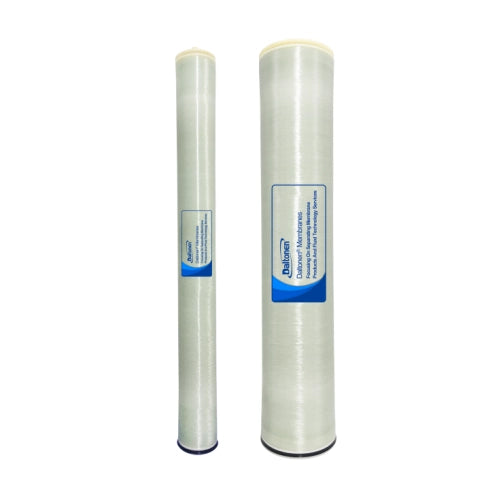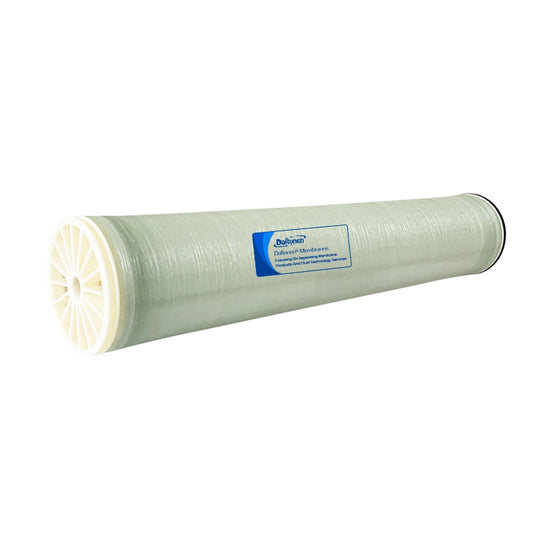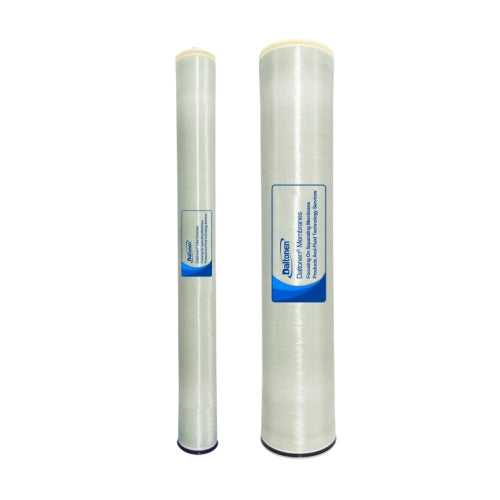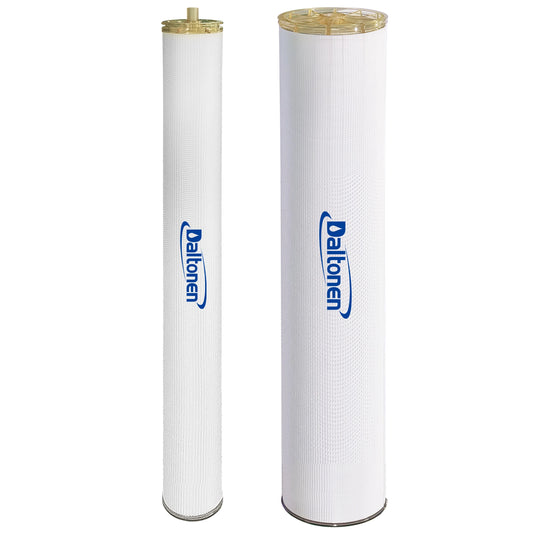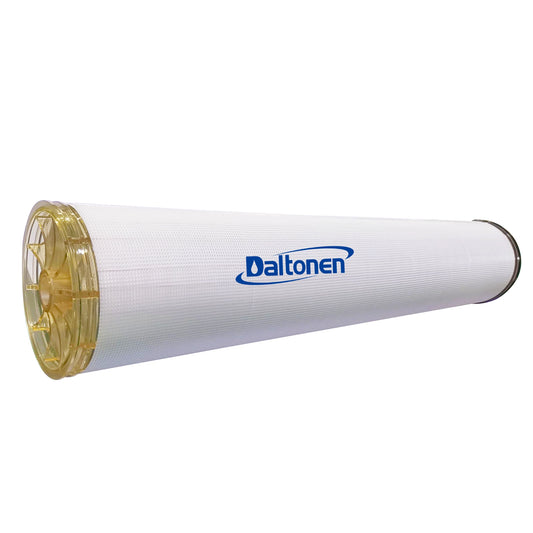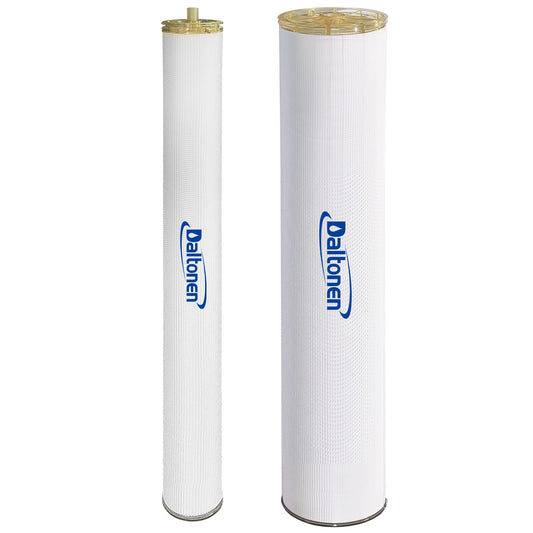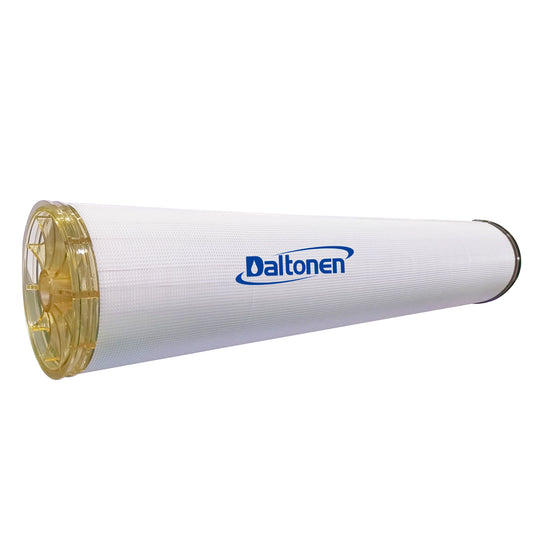Coal Chemical Wastewater RO Membrane Zero Discharge
10 Jun 2025
I. Characteristics of Coal Chemical Wastewater and Challenges for RO Membranes
Types of Pollutants
Threats to RO Membranes
High Salinity (Cl⁻, SO₄²⁻)
TDS 20,000-100,000 mg/L, high osmotic pressure (>60 bar), requiring ultra-high-pressure RO (>80 bar), energy consumption reaching 10-15 kWh/m³.
Organics (Phenols, Tar, Polycyclic Aromatic Hydrocarbons)
Form colloidal contamination, adsorb on membrane surfaces causing flux decline by 40%-60%, with chemical cleaning efficiency less than 50%.
Suspended Solids (Coal Powder, Ash)
Particulate matter (SS 200-500 mg/L) clogs membrane channels, requiring pre-treatment to achieve SDI<3, but often exceeds 5 in practice.
Sulfides (H₂S, S²⁻)
Oxidize to form sulfate (SO₄²⁻), which causes scaling (CaSO₄) at high concentration multiples, requiring scale inhibitors that interfere with salt recovery.
High Temperature (50-70℃)
The residual heat of coal chemical wastewater leads to high feed water temperature. Ordinary RO membranes (temperature tolerance <45℃) accelerate hydrolysis, reducing lifespan to 6-12 months.
Strong Acid/Alkali Fluctuations
pH fluctuations between 2-12 (e.g., gasification wastewater pH<3, phenol-ammonia recovery wastewater pH>10), causing degradation of polyamide membrane structure.

II. Core Pain Points of RO Membrane Application
Organic Contamination and Scaling
Tar and phenol adsorption: Tar emulsification forms colloids (particle size 0.1-1 μm), clogging membrane pores and reducing hydrophilicity, doubling the flux decay rate.
Calcium sulfate scaling: During RO concentration, the concentration product of SO₄²⁻ and Ca²⁺ exceeds the solubility product (Ksp), forming hard CaSO₄ scale, requiring frequent acid washing (pH 2 HCl).
High Salinity and Energy Consumption Contradiction
Extreme operating conditions: Treating wastewater with TDS 80,000 mg/L requires operating pressure >80 bar, with electricity consumption of 15-20 kWh per ton of water, accounting for 60% of the total ZLD cost.
Economic bottleneck: The coal chemical industry has a low profit margin (5%-8%), and high energy consumption leads to a ZLD system investment payback period of >8 years.
Insufficient Chemical and Thermal Resistance
High-temperature degradation: When feed water temperature >50℃, the hydrolysis rate of polyamide membranes accelerates (desalination rate monthly decay >5%), and high-temperature-resistant membranes (such as PES-based membranes) cost three times more.
Acid-alkali corrosion: pH<2 or >11 causes the membrane cross-linking structure to break (e.g., benzene ring opening), reducing lifespan to 0.5-1 year.
Concentrate Treatment and Resource Recovery Dilemma
Concentrate complexity: RO concentrate has TDS 150,000-300,000 mg/L, containing Cl⁻ (>50,000 mg/L), SO₄²⁻, and organics. After evaporation and crystallization, the proportion of mixed salts (containing organics/heavy metals) is >50%, with hazardous waste disposal costs of ¥3000-5000 per ton.
Low salt recovery rate: NaCl purity is insufficient (<90%) due to organic interference, making it difficult to use as a raw material for the chlor-alkali industry.
System Stability and Maintenance Costs
Frequent cleaning: Weekly acid washing (HCl) + alkali washing (NaOH) + surfactant cleaning is required, with downtime accounting for 25%.
Membrane replacement cost: Membrane lifespan is shortened to 0.5-1 year, with annual replacement costs exceeding ¥5 million (for a 1000 m³/d scale).
Tags:
